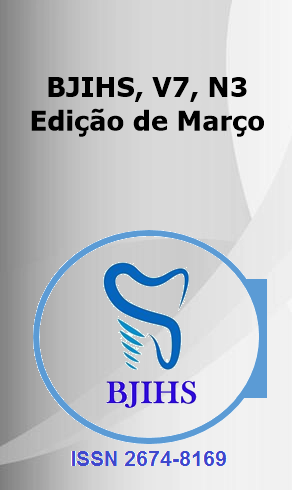Abstract
Acute myocardial infarction (AMI) is one of the leading causes of global mortality, requiring rapid interventions to minimize cardiac damage. Early reperfusion, through primary angioplasty or thrombolytic therapy, is essential to reduce complications and improve prognosis. In settings with limited access to percutaneous intervention, thrombolytics become a viable alternative. This study aims to analyze the impact of thrombolysis in emergency settings, highlighting its benefits, challenges, and the role of pre-hospital care in optimizing clinical outcomes. The search engines Scielo and PubMed were used for article selection, employing the keywords “Fibrinolytics; Myocardial Infarction; Thrombosis.” It is concluded that thrombolytic therapy is a relevant alternative in the treatment of ST-segment elevation myocardial infarction (STEMI), especially when primary angioplasty is unavailable. Studies show that early fibrinolysis reduces morbidity and mortality, but its effectiveness depends on administration timing and patient selection. In Brazil, logistical challenges hinder rapid access to percutaneous intervention, making pre-hospital thrombolysis a promising strategy. However, hemorrhagic complications and the need for rescue angioplasty require well-established protocols to optimize clinical outcomes.
References
ARMSTRONG, Paul W. et al. Fibrinolysis or primary PCI in ST-segment elevation myocardial infarction. New England Journal of Medicine, v. 368, n. 15, p. 1379-1387, 2013.
BATES, Eric R. Evolution from fibrinolytic therapy to a fibrinolytic strategy for patients with ST-segment–elevation myocardial infarction. Circulation, v. 130, n. 14, p. 1133-1135, 2014.
COLLEN, Désiré; LIJNEN, Roger H. Thrombolytic agents. Thrombosis and haemostasis, v. 93, n. 04, p. 627-630, 2005.
HOYE, Angela. The CAPTIM study. The Lancet, v. 361, n. 9358, p. 700, 2003.
LINDAHL, Bertil; MILLS, Nicholas L. A new clinical classification of acute myocardial infarction. Nature Medicine, v. 29, n. 9, p. 2200-2205, 2023.
LOURENS, A.; KREDO, T.; MCCAUL, M. Pre-hospital versus in-hospital thrombolysis for ST-elevation myocardial infarction. 2014.
Ministério da Saúde (BR). Departamento de Análise em Saúde e Vigilância das Doenças Não Transmissíveis. Principais causas de morte no Brasil; Brasília: Ministério da Saúde; 2020.
Ministério da Saúde (BR). Portaria n° 1010, de 21 de maio de 2012. Redefine as diretrizes para a implantação do Serviço de Atendimento Móvel de Urgência (SAMU 192) e sua Central de Regulação das Urgências, componente da Rede de Atenção às Urgências; Brasília: Ministério da Saúde; 2012.
MORRISON, Laurie J. et al. Mortality and prehospital thrombolysis for acute myocardial infarction: a meta-analysis. Jama, v. 283, n. 20, p. 2686-2692, 2000.
VAISHNAV, Aditi; KHANDEKAR, S.; VAISHNAV, S. Pre-hospital thrombolysis. The Journal of the Association of Physicians of India, v. 59, p. 14-18, 2011.
WIDIMSKÝ, Petr et al. Long distance transport for primary angioplasty vs immediate thrombolysis in acute myocardial infarction: final results of the randomized national multicentre trial—PRAGUE-2. European heart journal, v. 24, n. 1, p. 94-104, 2003.

This work is licensed under a Creative Commons Attribution 4.0 International License.
Copyright (c) 2025 Luíza Fricks Cabellino, Luana Victoria Dias Soares de Moura, Alan Marcelo Volpato, Altimar Nóbrega de Lima Júnior, Myrela Polyanna Bastos Silva Campos, Vinicius Fernandes Friedrich, Lara Vervloet Carvalho , Lilian Castilho Simão, Vanessa Maria Pereira Costa, Carlos Felipe Barbosa Rozeira, Nihara Franceschi Mota Barros, Luca Martins Marquez Soares
